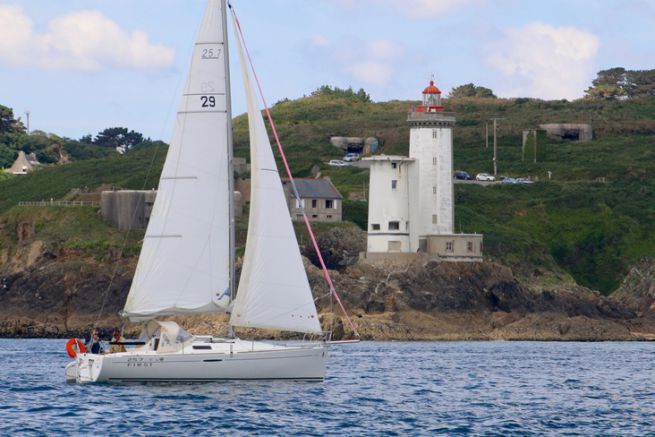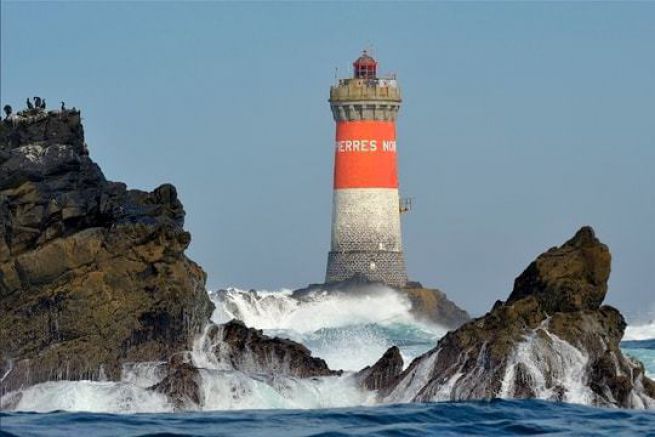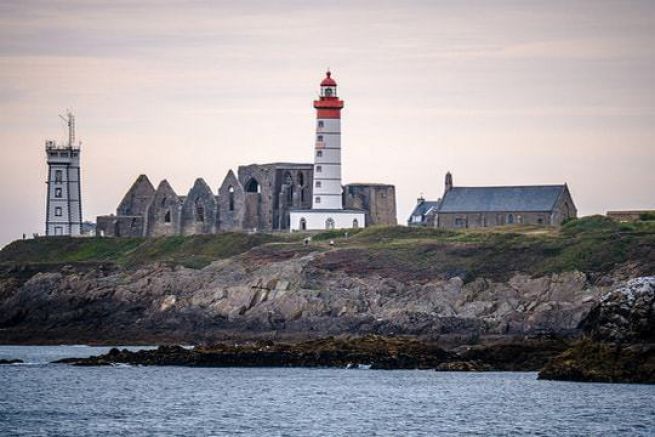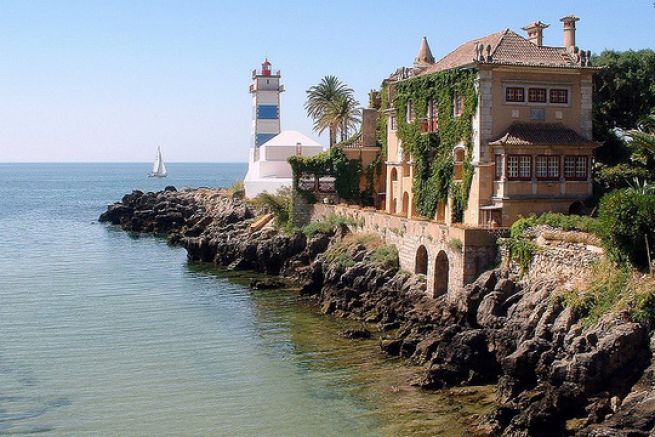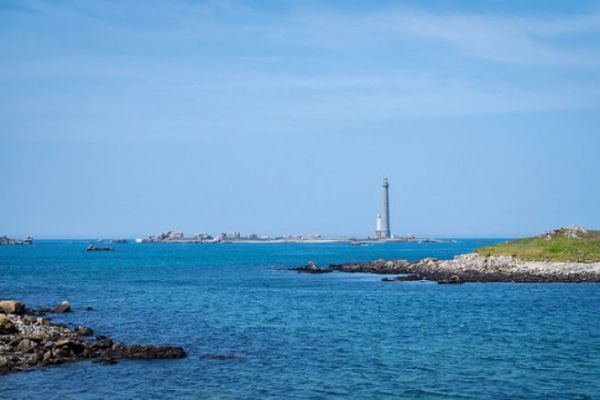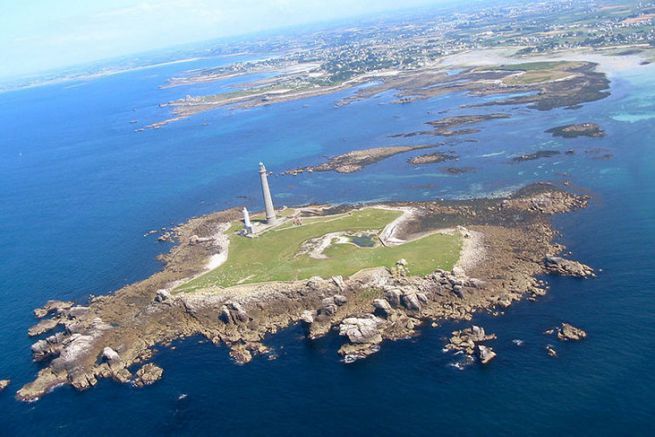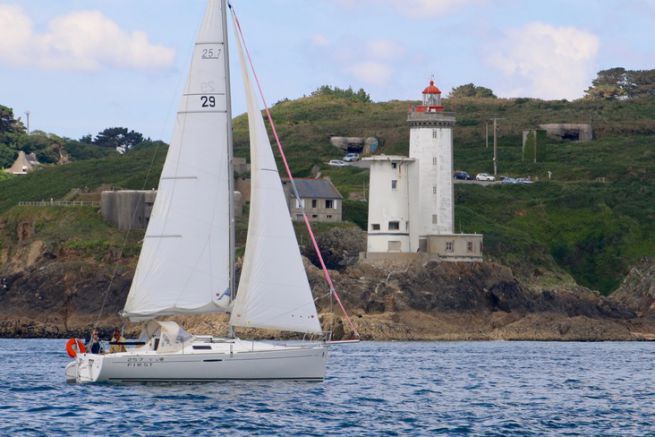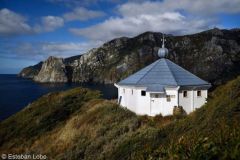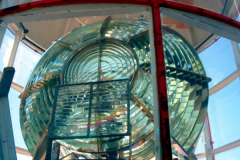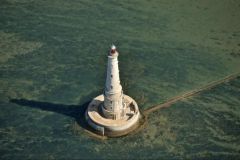Le Minou is a strategic site in the protection of the Narrows since it faces Camaret and the Bay of Berthaume. In the middle of the war against the English, who threatened to land in Brest, the Fort du Minou was built in 1700, ensuring French protection. This place, with its main military vocation, was to play a new role with the construction of the Petit Minou lighthouse.
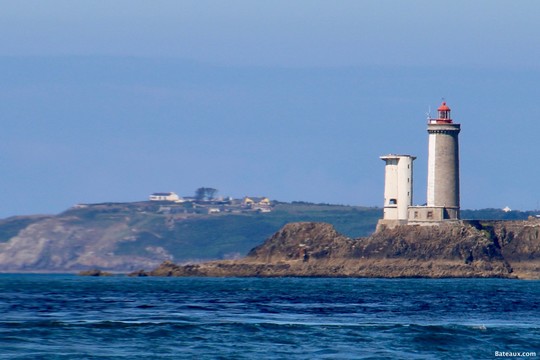
It was built in 1848 on the Pointe du Petit Minou - hence its name - at the request of the state. Indeed, it was the Navy that requested the construction of two range lights to secure access to the harbour, dotted with rocks. The project was presented in 1839, but it would take four years before the decision to start work was signed and the cylindrical tower could be built.
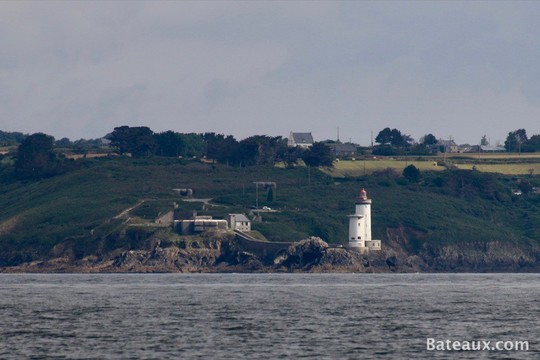
The 26 m high lighthouse is in line with the Porzic lighthouse and signals the entrance to Brest harbour. It is reached by a stone bridge, which connects it to the town of Plouzané. It is built in freestone extracted from the Aber-Ildut quarry, under the supervision of Louis Plantier, lighthouse and beacon engineer.
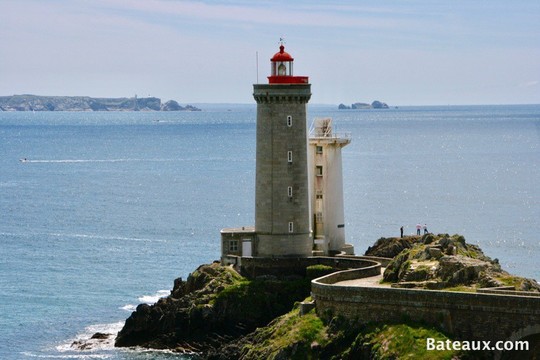
It was commissioned in January 1848 and peaks at 34 m above sea level. The signal of the lighthouse consists of two sectors - white and red - with 2 flashes every 6 seconds, with a range of 19 miles and 15 miles respectively. There is also a foghorn with one sound every 60 seconds.

The red sector is used to delimit the Plateau des Fillettes, one of the submerged rocks of the Brest Gully. To remember it, the sailors have invented a mnemonic: "Kitty blushes when he covers the Girls."
In the 1890s, it was repainted in white on the south-west side to make it more visible from the sea.
After the war, the military site was abandoned and the fort of Minou was left in poor condition by the German occupation. Only the lighthouse and the caretaker's house remain. But in the middle of the Cold War, in fear of attacking the roadstead, a white tower was built, not as high as the lighthouse, just in front of it. A radar was installed at the top of the tower to monitor the bottleneck until the early 1980s - the radar tower of the Semaphore of the French Navy - before it was dismantled.
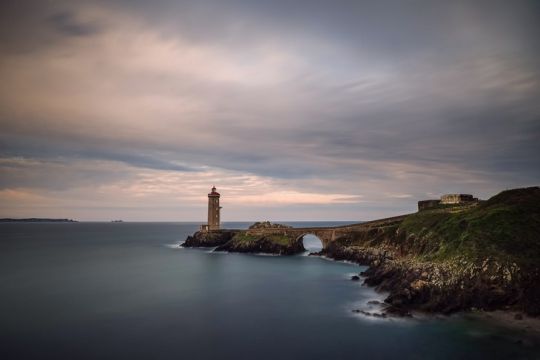
It was automated in 1989 and controlled from the control station of the Créac'h lighthouse in Ouessant.
Until then, the site of Le Minou was a military site, and therefore closed to the public. But finally, the state decided to sell it, making the visit possible. Note that the lighthouse is closed in case of heavy storms, since the sea comes over the bridge. It can also be reached by a superb coastal path (the GR-34) which allows access to a beach below, for a different viewpoint. The beach of Petit Minou is also a famous spot in the surfing world.
